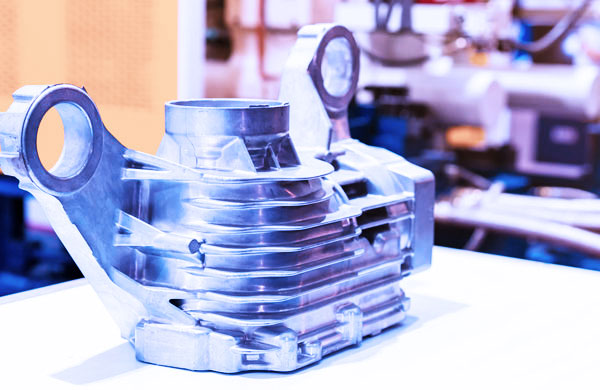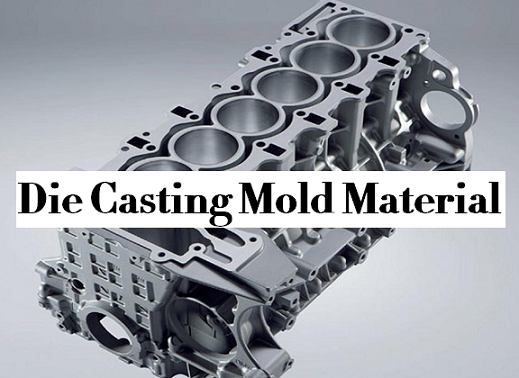Top Guidelines Of Stahl Specialty Company
Top Guidelines Of Stahl Specialty Company
Blog Article
Some Known Facts About Stahl Specialty Company.
Table of ContentsStahl Specialty Company Can Be Fun For EveryoneThe Greatest Guide To Stahl Specialty Company4 Simple Techniques For Stahl Specialty CompanyThe Single Strategy To Use For Stahl Specialty CompanySome Known Incorrect Statements About Stahl Specialty Company The Definitive Guide to Stahl Specialty Company

If you're creating a steel item, you've likely thought about making use of light weight aluminum as the base material. It has a high strength-to-weight ratio, good corrosion resistance, great formability, and visual charm. These aspects have actually resulted in its increased popularity in recent times. Pure aluminum has restricted applications, so it is commonly combined with other elements, such as silicon, magnesium, and manganese to form alloys.
Different aspects and quantities create a vast variety of desirable physical and chemical properties. And the Aluminum Association (AA), based in The United States and copyright, has actually created specifications that control light weight aluminum alloys' composition, residential properties, and language. There are two kinds of light weight aluminum alloys wrought and cast. Factory employees develop these alloy enters various means, which considerably affects their qualities.
The 30-Second Trick For Stahl Specialty Company
Cast aluminum alloys are made by thawing pure aluminum and combining it with various other metals while in liquid form. The mix is put into a sand, pass away, or investment mold. After solidification, the steel is eliminated from its mold. At this phase, it is in either its last type or as a billet or ingot for further processing.

The fourth number, which comes after the decimal point, defines if the alloy is a spreading (xxx. Wrought aluminum alloys also begin by integrating liquified light weight aluminum with various other steels. In comparison to cast alloys, nevertheless, they are formed into their final shape via processes such as extrusion, rolling, and flexing after the steel has actually solidified into billets or ingots.
There are lots of small differences between wrought and cast aluminum alloys, such as that actors alloys can consist of extra substantial quantities of various other metals than wrought alloys. However the most noteworthy difference between these alloys is the fabrication procedure through which they will most likely to provide the last item. Aside from some surface area treatments, cast alloys will leave their mold in nearly the precise solid type desired, whereas wrought alloys will certainly undertake a number of modifications while in their solid state.
If you believe that a functioned alloy may be the most effective for your task, take a look at some of our articles that clarify even more about particular wrought alloys, such as Alloy 6061 and Alloy 6063. On the various other hand, if you think an actors alloy would be much better for you, you can find out more concerning some actors alloys in our Alloy 380 and Alloy 383 posts (coming soon).
6 Simple Techniques For Stahl Specialty Company
When selecting a light weight aluminum foundry for your production needs, it's critical to study numerous variables. Among the most critical facets to consider is the experience and capability of the factory. Foundry near me. Selecting a foundry who has the best understanding of the light weight aluminum casting process, and the portfolio to reveal for it, helps to have a successful end result for your task
Having the experience and industry understanding to craft your spreadings for optimal production and high quality results will improve the project. Producing aluminum castings needs a complex set of processes to achieve the best results. When selecting a brand-new aluminum factory to companion with, guarantee they have substantial industry experience and are experienced about all facets of the light weight aluminum spreading procedure: design, production, material analysis, and product testing.
The factory must additionally have a tried and tested record of supplying remarkable products that meet or exceed customer assumptions. Quality assurance needs to additionally go to the top of your listing when choosing an aluminum foundry. By functioning with a qualified factory who adheres to the criteria for quality control, you can secure the honesty of your product and ensure it satisfies your specifications.
By picking a business who supplies solutions that meet or exceed your product needs, you can be sure that your find here task will be finished with the utmost accuracy and efficiency. Different parts call for different production methods to cast light weight aluminum, such as sand casting or pass away spreading.
Stahl Specialty Company Things To Know Before You Get This
Die spreading is the name given to the procedure of producing complex metal parts through use of molds of the element, additionally known as passes away. It produces more parts than any kind of various other procedure, with a high degree of precision and repeatability. There are three sub-processes that drop under the classification of die casting: gravity pass away spreading (or long-term mold casting), low-pressure die spreading and high-pressure die spreading.
After the pureness of the alloy is examined, passes away are created. To prepare the passes away for spreading, it is essential that the passes away are tidy, so that no deposit from previous productions stay.
Not known Details About Stahl Specialty Company
The pure steel, additionally referred to as ingot, is contributed to the heating system and maintained the molten temperature level of the steel, which is then transferred to the shot chamber and infused right into the die. The stress is then maintained as the metal solidifies. As soon as the steel strengthens, the cooling procedure begins.
(https://my.omsystem.com/members/stahlspecialc)
The thicker the wall of the component, the longer the cooling time since of the amount of interior steel that also needs to cool. After the component is completely cooled down, the die cuts in half open and an ejection system pushes the element out. Adhering to the ejection, the die is closed for the next shot cycle.
The flash is the additional material that is cast during the process. This need to be trimmed off making use of a trim device to leave just the primary component. Deburring removes the smaller sized pieces, called burrs, after the cutting procedure. Finally, the element is polished, or burnished, to give it a smooth surface.
The Best Guide To Stahl Specialty Company

Zinc is one of the most secondhand alloys for die spreading because of its reduced cost of basic materials. It's likewise one of the more powerful and steady steels. Plus, it has excellent electrical and thermal conductivity. Its corrosion resistance additionally allows the parts to be long-term, and it is one of the much more castable alloys because of its lower melting point - Casting Foundry.
As stated, this alloy is among one of the most typically made use of, yet manufactures will, sometimes, select light weight aluminum over zinc as a result of light weight aluminum's production advantages. Aluminum is highly economical and one of the more flexible alloys. Light weight aluminum is utilized for a number of different products and markets anything from window frameworks to aerospace products.
Report this page